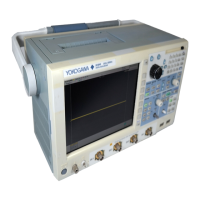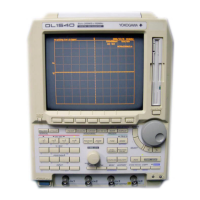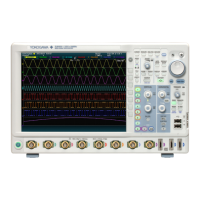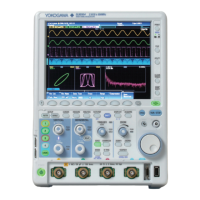2-19
IM 701450-01E
2
Explanation of Functions
Zooming the Waveform <For the setup procedure, see section 8.4>
The displayed waveform can be expanded along the time axis. This function is useful
when the waveform acquisition time is set long and you wish to observe a particular
section of the waveform closely. Zooming is not possible if the number of displayed
points on the screen is less than or equal to 50. The zoom position can be set in units of
divisions of the grid.
Zoomed waveforms of up to two locations can be displayed simultaneously (dual zoom).
Below are the combinations of the normal waveform and zoomed waveform displays
when the normal waveform display frame is denoted as Main and the two zoom
waveform display frames are denoted as Z1 and Z2.
<Main>
<Z1> or <Z2>
<Main>
<Z2><Z1>
<Z1>
<Z2>
<Z1>
or <Z2>
When displaying Main (main waveform) and Z1 or Z2 (zoomed waveform)
simultaneously, a zoom box indicating the zoom position is displayed within the main
waveform display frame. The center of the zoom area corresponds to the center of the
zoom box. For a display example, see “Display Example When Displaying Zoom
Waveforms” in section 1.3.
X-Y Waveform Display <For the setup procedure, see section 8.5>
The relationship between the levels of two input signals can be observed by taking the
level of the waveform assigned to the X-axis (horizontal axis) and the level of another
waveform (whose display is turned ON) assigned to the Y-axis (vertical axis).
Simultaneous observation of X-Y waveforms and normal T-Y waveforms (waveform
display using time axis and level) is possible. You can use the X-Y waveform display
function to measure the phase angle between two sine wave signals. For example, the
waveform that appears when two sine waveforms are shown on the X-Y display is called
a Lissajous waveform. From this waveform, the phase angle can be obtained. For a
display example, see “Display Example When Displaying X-Y Waveforms” in section 1.3.
Phase
angle 0°
Phase
angle 45°
Phase
angle 90°
Frequency
ratio
(X:Y)
1:1 1:2
1:3
Lissajous waveform
2.4 Waveform Acquisition and Display Conditions
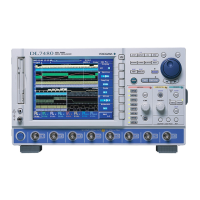
